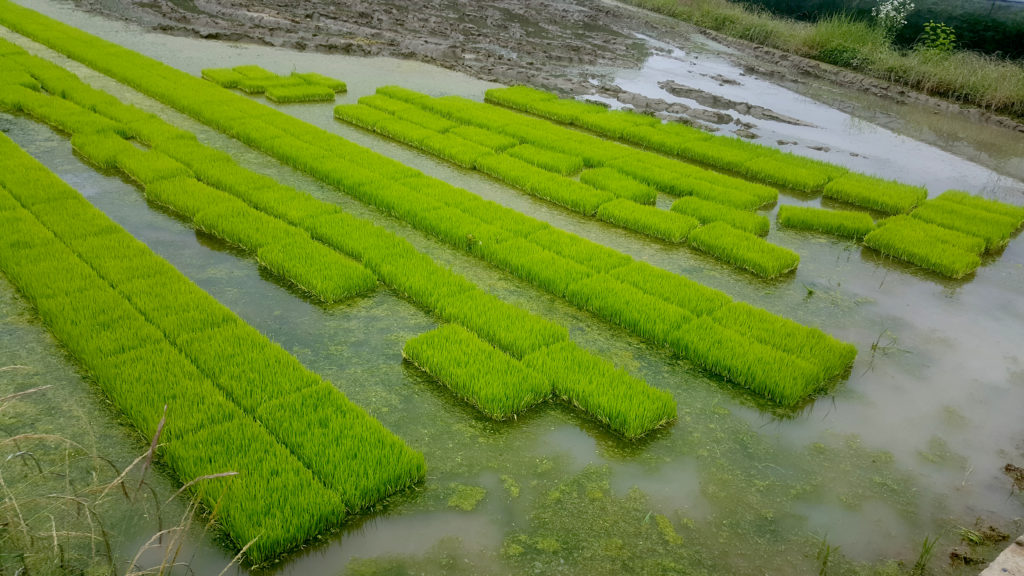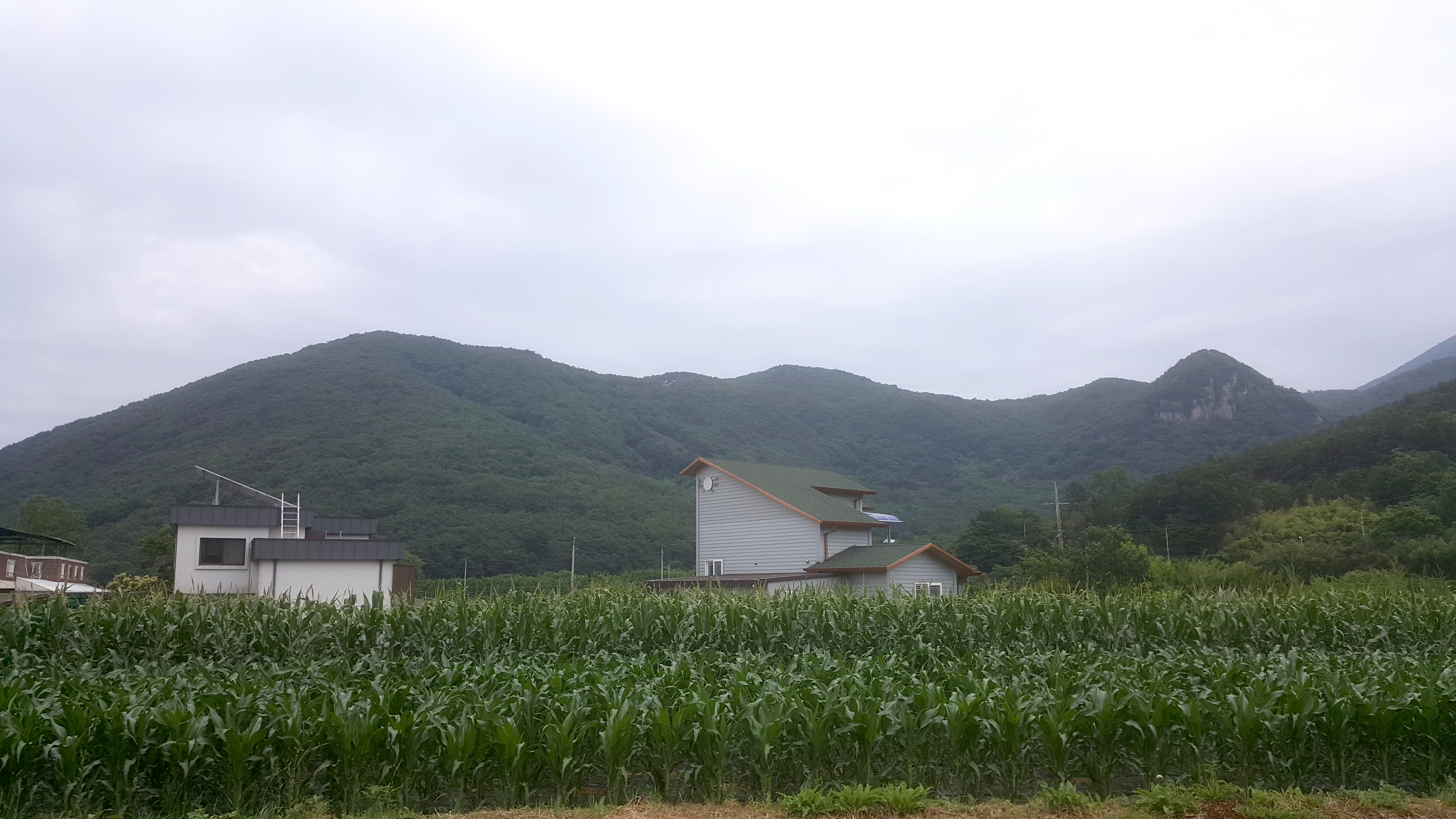Geumgok Village and Its Surroundings
Written and photographed by Shahed Kayes
Traveling and writing poetry are my passions. Over the past three years, whenever I have gotten the chance, I have spent a great deal of time wandering through the places around Gwangju and other parts of Korea.
Last month, I explored the village of Geumgok (금곡마을) and its surroundings. It was a sunny summer day on June 10. A friend, Han Ki-yong, came with his car to my campus. With my other department friends, Stephie, Dinesh, Don, Sukpei, and Zico, we started from our dormitory at Chonnam National University for Geumgok in the morning. After a 40-minute drive, we reached our destination.
Geumgok is a traditional Korean mountain village on the skirt of Mudeung Mountain (무등산) some 200 meters above sea level. Our friend and host, Kim Yang-rae, had invited us as it is his village. During our visit, we explored the village, its small morning village market, the Chunghyo-dong pot-tery kiln and clay mineral sites, the Pungam-jeong (풍암정) pavilion, the nearby reservoir, lakes, and Gwangju Lake Ecological Park.

The Pungam-jeong Pavilion
We took the Pungam-jeong trail and hiked for a couple of hours through the village and the mountain forest, then we stood near the reservoir for some time.
Next, we visited Pungam-jeong. Kim, our host, told us the tragic story about this pavilion. The story goes like this: Pungam-jeong was built by Kim Deok-bo in the middle of the Joseon Dynasty. It is believed to have been built before 1614, based on the book Pungam-gi (풍암기) by Jeong Hong-myeong, which was written that same year. The pavilion was given the name “Pungam” because it was surrounded by beautiful scenery. Kim Deok-bo was the brother of General Kim Deok-ryeong, who fought during the Japanese invasions of Korea (1592–1598). During a battle, their eldest brother, Kim Deok-hong, died, and Kim Deok-ryeong was executed under false accusations. Kim Deok-bo retired and built this pavilion in the Wonhyo Valley of Mudeung Mountain to alleviate his sorrow. He spent his later life in study, living like a hermit.
Chunghyo-dong Clay Mineral Site and Museum
After visiting the Pungam-jeong, we came to the Chunghyo-dong clay mineral site. The Mudeung Mountain area was formed by Mesozoic volcanic activity, and the area around the Chunghyo-dong kiln site is now composed of granite, andesite, and weathered soil. This kiln site was the place where pottery was produced from the end of the Goryeo Dynasty to the beginning of the Joseon Dynasty. We visited the Chunghyo-dong Museum of Pottery and kiln site. The museum guide told us about all the pottery items and white porcelain preserved in the museum. He also explained the history of our location. The guide spoke in Korean, but our friend, Han Ki-young, translated for us in English. The excavation research of the kilns at Chunghyo-dong has revealed that they would all have been tunnel-type climbing kilns without compartmentalized firing chambers built on the gentle slopes of the mountain.

Ceramic Artist’s Workshop, kiln, and Studio
We had lunch at a Korean traditional restaurant in Geumgok. After lunch, we went to visit the ceramic workshop, kiln, and studio of local artist Lee Eun-sok. Lee explained how he makes the clay into pottery, then paints and varnishes each piece. A kiln, or pottery furnace, is a thermally insulated chamber – a type of oven – that produces temperatures sufficient to complete some process, such as hardening, drying, or chemical changes. Kilns have been used for millennia to turn objects made from clay into pottery. The whole process was very interesting but requires lots of patience. Lee gifted each of us a ceramic bowl, and Kim, our generous host, gifted us ceramic mugs, which were painted by us directly in the studio and would later be shipped to us after drying.

Gwangju Lake Ecological Park
In the evening, we visited Gwangju Lake Ecological Park. Our two friends, artists You In-rae and Louis Vinciguerra, joined us at the park. They also happen to live in the same village.
The park is very popular and can get busy, especially on the weekend during mid-afternoon. You can see more than 170,000 kinds of wild flowers there, including azaleas, forsythia, rosebay, roses, royal azaleas, and hydrangeas. You can also enjoy the picturesque view of over 3,000 kinds of trees, including snowbells, quince, Chinese parasol trees, Japanese maples, and metasequoia. The most popular places in the park are the Buyeop Botanical Garden, the waterfront observatory deck, and the rock garden. Entering Gwangju Lake Ecological Park, I immediately became overjoyed and speechless by the beauty of the park! The park is a gorgeous green mountain range with a web of well-posted trails. It is a paradise filled with green forests, cool mountain streams, and quiet meadows where butterflies flit above the wild flowers. You will find the joy of a fantastic evening hike in the mountains here.
We stayed at Kim’s beautiful house that night. The next morning, the mountain was foggy, the temperature was low, and rain showered down on the area. It was a really memorable trip to Mudeung Mountain! As city life is always very busy, serenity can be a hard thing to find in the hustle-bustle of our lives. If you want to enjoy a little fresh air and serene sights, you should make the trip to the mountain village of Geumgok and its surroundings.
The Author
Shahed Kayes is a poet and human rights activist from Bangladesh. He has published three volumes of poetry in Bengali and has edited an anthology of Bengali love poems. He has also produced a book in English on the Gwangju Prize for Human Rights. At present, he is pursuing an MA in human rights at Chonnam National University in Gwangju.



